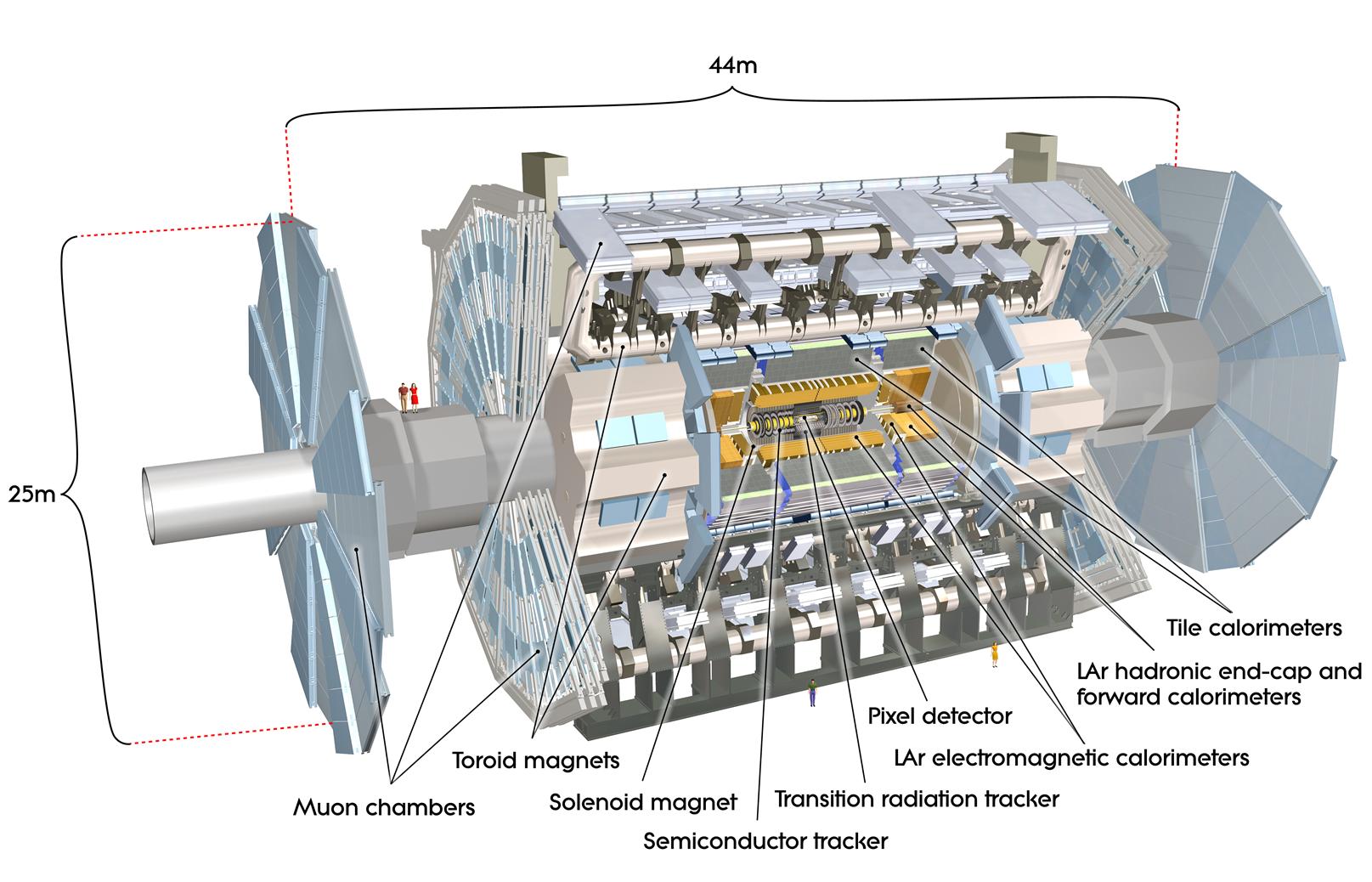Introduction to the ATLAS Experiment
The ATLAS Detector
The ATLAS (A Toroidal LHC ApparatuS) detector is one of the two general-purpose detectors at the Large Hadron Collider (LHC). It is a key tool in high-energy physics because it provides comprehensive data on the vast amount of particles created in the LHC's high-energy collisions. Its array of sensors and instruments is designed to track and identify particles with great precision, enabling scientists to reconstruct and analyze the complex events resulting from these collisions. ATLAS plays a central role in the LHC's research by allowing physicists to test theoretical predictions in particle physics, including the existence of predicted but undiscovered particles, and to explore the fundamental forces and materials that shape our universe. Through this extensive data collection and analysis, ATLAS contributes significantly to our understanding of the Standard Model and the search for new physics beyond it.
Design and Components
ATLAS is a multi-purpose particle physics detector with a forward-backward symmetric cylindrical geometry and nearly 4π coverage in solid angle. It is one of the largest and most complex scientific instruments ever constructed, measuring about 44 meters in length and 25 meters in diameter. The detector consists of various layers, each designed to measure different properties of the particles that emerge from the LHC collisions:
- Inner Tracker: Closest to the collision point, this high-precision tracker detects the paths of charged particles.
- Calorimeters: Surrounding the tracker are the calorimeters. The Electromagnetic Calorimeter measures the energy of electrons and photons, while the Hadronic Calorimeter does the same for hadrons.
- Muon Spectrometer: Encasing the calorimeters, the muon spectrometer tracks muons, particles similar to electrons but much heavier, using a system of large superconducting magnets and precision chambers.
- Magnet Systems: The ATLAS detector utilizes a unique configuration of magnets, including the largest superconducting toroid magnets ever made, to bend the paths of charged particles for momentum measurement.

ATLAS is designed to detect a wide range of particle interactions. Its various components work together to provide comprehensive data about the particles produced in LHC collisions, including their trajectories, momenta, energy, and other identifying characteristics. This information is used for identifying and studying the properties of new and known particles, testing the predictions of the Standard Model, and searching for new physics beyond it.
The Collaboration
The ATLAS collaboration is proof of the effectiveness of global scientific partnership. Comprising over 3,000 scientific authors from 42 countries and 182 institutions, the success of ATLAS relies on the close collaboration of research teams located at CERN, and at member universities and laboratories worldwide. Click on the map below to learn more about the institutes.
The organizational structure of ATLAS is designed to foster autonomy and collaborative synergy, allowing individual researchers and groups to focus on areas of personal scientific interest while contributing to the collective goals of the experiment. This balance of individual initiative and shared work is important for innovation within the project's framework.
Financially, the collaboration is underpinned by contributions from international funding agencies, CERN, and university investments, reflecting the shared global commitment to advancing scientific knowledge.
The leadership within ATLAS is democratically elected, ensuring that decision-making reflects the collaboration's diverse perspectives and expertise. This inclusive approach extends to the management of the detector's subsystems, with each team's creative input shaping the project's success.
The collaborative nature of ATLAS means that the data generated is a product of significant investment, both in terms of finance and human capital. The decision to keep data within the collaboration for a period before public release is a reflection of this investment and the need to ensure that those who have contributed have the opportunity to analyze and publish their findings.
The ATLAS collaboration operates on principles of shared knowledge, democratic governance, and equitable contribution, which are all key in achieving the scientific objectives while guaranteeing fair recognition and utilization of the resources provided by its international partners.